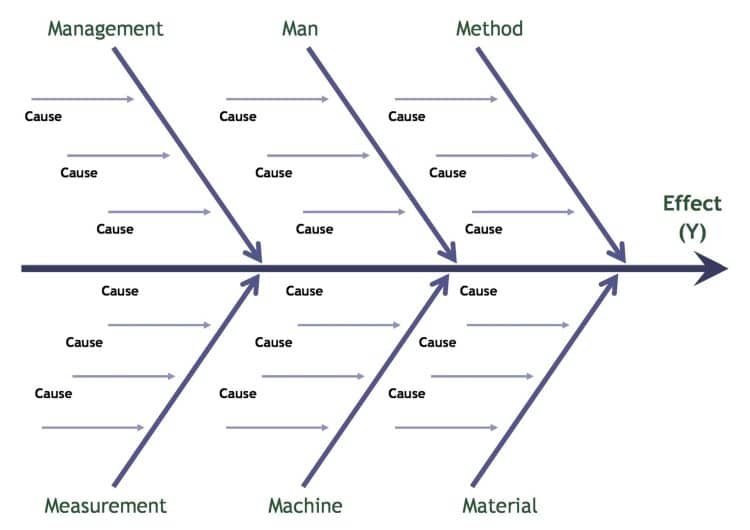Every organization faces several problems that must be resolved for proper operations. Yet, often the biggest challenge remains to pinpoint the root cause of any given issue and create effective solutions.
Failing to identify the source of problems can result in an endless cycle of firefighting that wastes time and resources and ultimately decreases productivity.
The solution to this problem is — Root Cause Analysis (RCA).
Root Cause Analysis (RCA) is a systematic method for identifying the underlying causes of problems or events to avoid future recurrences.
This article will detail the advantages of RCA with examples. These benefits include reducing problems, saving time and money, improving decision-making, improving product quality, and improving customer satisfaction.
The Benefits of Root Cause Analysis
Reducing the occurrence of problems
A primary benefit of RCA is reducing the occurrence of problems. By identifying the root cause(s), organizations can take corrective actions to avoid similar issues from occurring again in the future.
By transitioning away from reactive to proactive problem-solving approaches, RCA allows organizations to shift their focus from simply treating symptoms of issues to addressing the root cause(s).
Example: A manufacturing company experiencing delays in its production process could use root cause analysis tools to pinpoint its root causes of delays. This could include malfunctioning equipment or poor team communication, which can then be rectified to prevent recurring delays.
Saving time and money
RCA saves a lot of time and money for the organization by identifying the root cause of the issue. This saves the problem from recurring, meaning the organizations don’t need to spend time and resources in the future to deal with the same problem repeatedly, and can more efficiently prioritize efforts and allocate resources effectively.
Example: A sales team repeatedly struggles to meet sales targets. Managers think of hiring new sales experts in order to meet the target. However, firing and hiring cost the company a lot of time, effort, and money. When they used RCA, they discovered that the problem was in the quality of leads.
Once they know the root cause of low sales, they can focus their efforts on generating quality leads to improve sales.
Improved decision-making
With the help of RCA, organizations are able to make better decisions. It provides a comprehensive understanding of issues, promotes continuous improvement, and aids in risk management. This saves time and money, improves operations, and keeps organizations ahead of the competition.
Example: Financial institutions experiencing a security breach can use Root Cause Analysis to ascertain its source, potentially unearthing inadequate security protocols or inadequate employee training as possible causes. By taking measures to address those areas and providing employee training programs for prevention purposes, informed decisions about resource allocation and risk management can be made more accurately by this method.
Improved product quality
RCA can help organizations improve product quality by identifying the source(s) of defects or failures and taking steps to address them; by doing this, organizations can enhance their products and services for increased customer satisfaction and loyalty.
Example: Software companies who receive frequent customer complaints about bugs in their product can utilize Root Cause Analysis to identify their root cause, such as inadequate testing or documentation.
Once identified, this company can take the right actions to improve testing processes or enhance documentation to prevent future bugs from appearing and increase customer satisfaction by improving product quality and customer satisfaction.

How to Perform a Root Cause Analysis
Performing a Root Cause Analysis (RCA) is crucial in identifying the issues that led to a problem or failure. Here’s how to perform an efficient RCA:
- Identify the problem: Clearly define the issue and document all related information.
- Gather data: Collect relevant data, including reports, interviews, observations, and documentation.
- Analyze the data: Review all gathered information and look for patterns or trends that may indicate the root cause of the problem.
- Determine causes: Ask why? Repeatedly until you reach a logical conclusion about what caused the issue. You can use the “Five Whys” example.
- Develop solutions: Once you have identified potential causes, develop corrective actions that address them effectively.
- Implement solutions: Put your plan into action by executing your proposed solutions.
- Follow up on results: Monitor progress towards resolving issues with regular check-ins and follow-up assessments to ensure success.
Conclusion
Root Cause Analysis (RCA) is a very useful method that enables organizations to quickly identify the root causes of problems and stop them from reoccurring in the future. Not only does RCA save both time and money, but it can also improve overall organizational efficiency and effectiveness.
By investing in RCA as an integral part of their daily operations, organizations can significantly lower risk from costly and time-consuming problems, enhance operations and ensure long-term success. Therefore, it is strongly advised that organizations prioritize RCA as an essential element of their problem-solving processes to strengthen their bottom lines and boost overall performance.










Leave a Reply